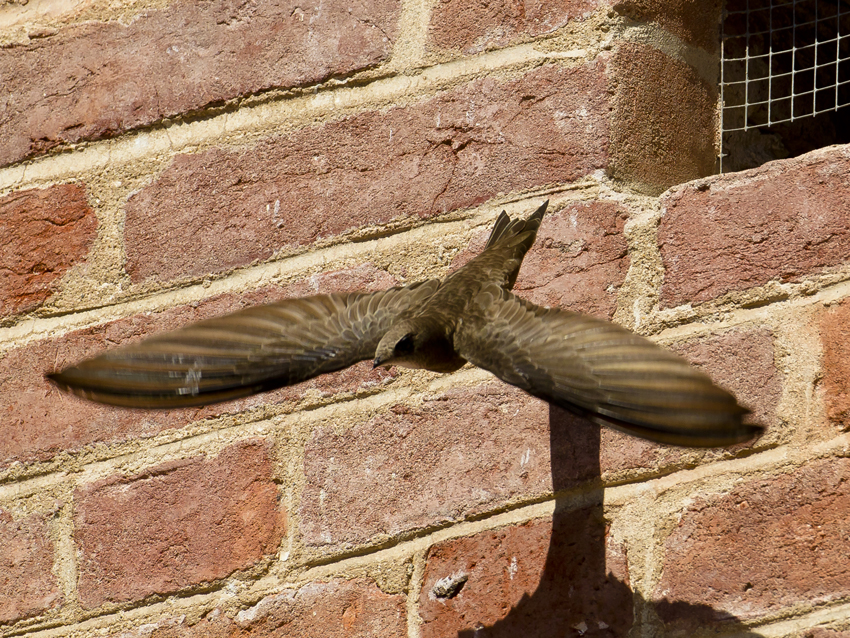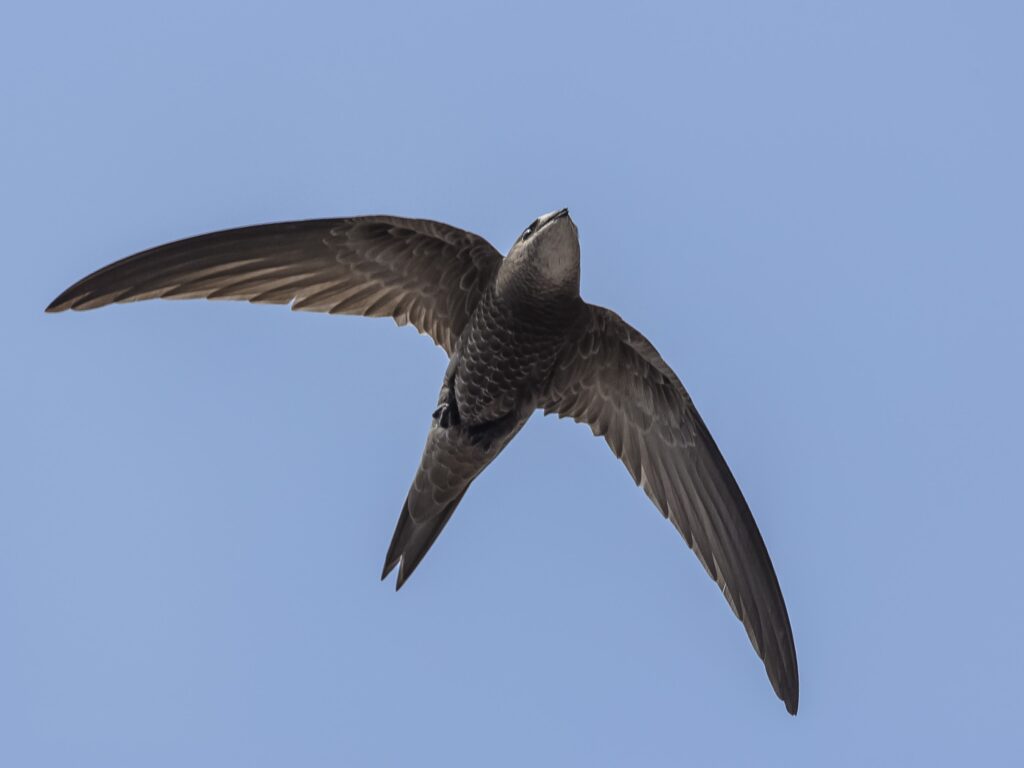ENGLISH
I rondoni sono uccelli che trascorrono gran parte della vita in volo. Si posano solo per nidificare. In Italia nidificano 3 specie di Rondoni; il rondone omune, il rondone pallido e il rondone maggiore. Tutte e tre le specie nidificano a Carmagnola. In particolare, nelle buche pontaie di Palazzo Lomellini, nidifica una importante colonia di oltre 120 coppie di Rondoni pallidi. Qui la specie è stata scoperta nel 1974 e da allora seguita con numerose ricerche portate avanti dal Museo Civico di Storia Naturale in collaborazione con le Università di Torino, del Piemonte Orientale, di Lund (Svezia) e A&T University di College Station (Texas, USA).

Moltissime informazioni sui Rondoni e sulla loro conservazione si possono trovare al Link: MONUMENTI VIVI

Bibliografia (Lavori su rondoni pubblicati basati su ricerche eseguite a Carmagnola)
Pellegrino, I., Cucco, M., Harvey, J. A., Liberatore, F., Pavia, M., Voelker, G., & Boano, G. (2017). So similar and yet so different: taxonomic status of Pallid Swift Apus pallidus and Common Swift Apus apus. Bird Study, 64(3), 344-352.
Hedenström, A., Norevik, G., Boano, G., Andersson, A., Bäckman, J., & Åkesson, S. (2019). Flight activity in pallid swifts Apus pallidus during the non‐breeding period. Journal of Avian Biology, 50(2).
Cucco, M., & Malacarne, G. (1996). Reproduction of the pallid swift (Apus pallidus) in relation to weather and aerial insect abundance. Italian Journal of Zoology, 63(3), 247-253.
Cucco, M., Malacarne, G., Orecchia, G., & Boano, G. (1992). Influence of weather conditions on pallid swift Apus pallidus breeding success. Ecography, 15(2), 184-189.
Boano, G., Pellegrino, I., & Cucco, M. (2015). Moult and morphometrics of the pallid swift Apus pallidus in northwestern Italy. Ardeola, 62(1), 35-48.
Malacarne, G., Cucco, M., & Bertolo, E. (1994). Sibling competition in asynchronously hatched broods of the pallid swift (Apus pallidus). Ethology ecology & evolution, 6(3), 293-300.
CRISTIANO, L., LANTIERI, A., & BOANO, G. (2018). Comparison of Pallid Swift Apus pallidus diet across 20 years reveals the recent appearance of an invasive insect pest. Avocetta, 42(1).
Boano, G., Cucco, M., Malacarne, G., & Orecchia, G. (1993). Survival rate and mate fidelity in the Pallid Swift Apus pallidus. Avocetta, 17, 189-197.
Malacarne, G., & Cucco, M. (1991). Chick mortality and hatching asynchrony in the Pallid Swift Apus pallidus. Avocetta, 15, 19-24.
Cucco, M., & Malacarne, G. (1996). Factors affecting egg mass in the Pallid Swift Apus pallidus. Bird Study, 43(3), 314-319.
Malacarne, G., & Cucco, M. (1990). Shifts in sound features of the duetting pallid swifts Apus pallidus L. Italian Journal of Zoology, 57(1), 51-53.
Boano, G., & Cucco, M. (1989). Breeding biology of the Pallid Swift (Apus pallidus) in North-western Italy. Gerfaut/Giervalk, 79(1-4), 133-148.
Cucco, M., & Malacarne, G. (1987). Distribution and nest-hole selection in the breeding Pallid Swift. Avocetta, 11(1), 57-61.
Malacarne, G., Palomba, I., Griffa, M., Castellano, S., & Cucco, M. (1989). Quantitative analysis of differences in the vocaIizations of the Common Swift Apus apus and the PaIIid Swift Apus pallidus.
Cucco, M., & Malacarne, G. (1996). Effect of food availability on nestling growth and fledging success in manipulated pallid swift broods. Journal of Zoology, 240(1), 141-151.
Boano, G., Casola, D., Cucco, M., Ferri, M., Micheloni, P., Manica, M., & Pellegrino, I. (2021). Onset of primary moult in immature and breeding adult Common Swifts Apus apus. Ringing & Migration, 36(2), 116-122.
Ferri, M. (2018). Le “rondonare”: come attrarre i rondoni negli edifici, dal Medioevo ai nostri giorni. Atti Società dei Naturalisti e dei Matematici di Modena, 149, 181-224.
Ilahiane, L., Colominas-Ciurò, R., Bize, P., Boano, G., Cucco, M., Ferri, M., … & Pellegrino, I. (2023). Molecular investigation on infection by haemosporidians in three Western Palearctic species of swift (Apodidae) and their ectoparasitic louse flies. Parasitology Research, 122(8), 1787-1794.
Malacarne, G., Cucco, M., & Orecchia, G. (1992). Nest attendance, parental roles and breeding success in the Pallid Swift (Apus pallidus). Vogelwarte, 36(3), 203-210.
Boano, G., & Cucco, M. (2022). Age at first reproduction and longest-lived individuals in the Pallid Swift Apus pallidus. Avocetta, 46, 33-39.
Boano, G., Pellegrino, I., Ferri, M., Cucco, M., Minelli, F., & Åkesson, S. (2020). Climate anomalies affect annual survival rates of swifts wintering in sub‐Saharan Africa. Ecology and Evolution, 10(14), 7916-7928.
Norevik, G., Boano, G., Hedenström, A., Lardelli, R., Liechti, F., & Åkesson, S. (2019). Highly mobile insectivorous swifts perform multiple intra‐tropical migrations to exploit an asynchronous African phenology. Oikos, 128(5), 640-648.
BOANO, G. (1979). Il rondone pallido Apus pallidus in Piemonte. Riv. Ital. Orn, 49, 1-23.